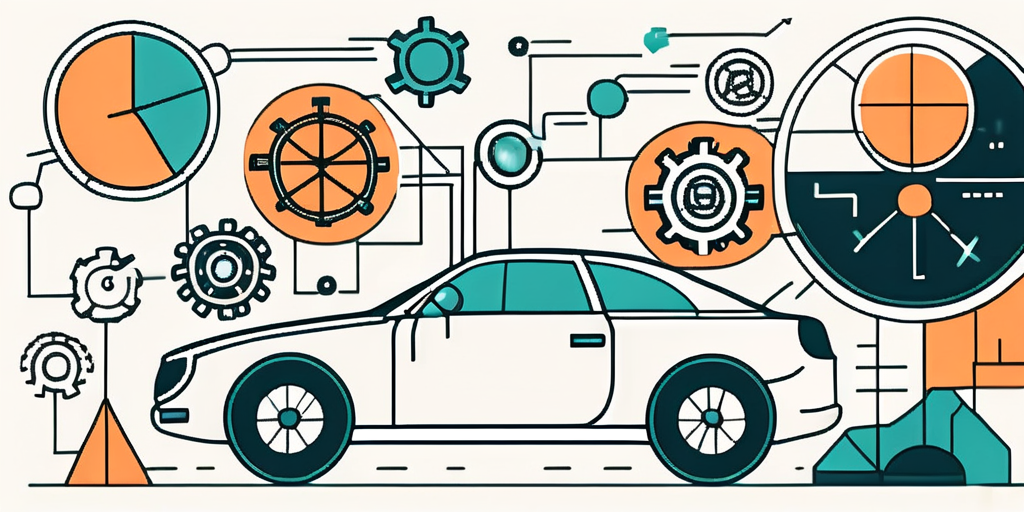Effective Automotive SEO Strategies
Search Engine Optimization (SEO) is a crucial component of any successful online marketing strategy. In the automotive industry, where competition is fierce and consumers are increasingly turning to the internet for their vehicle needs, effective automotive SEO is more important than ever. This comprehensive guide will delve into the intricacies of automotive SEO, providing you with the knowledge and tools to drive your online presence to the top of search engine rankings.

Understanding Automotive SEO
Before diving into specific strategies, it’s important to understand what automotive SEO is and why it’s so crucial. SEO refers to the process of optimizing your website to rank higher in search engine results pages (SERPs). This involves a combination of on-page and off-page strategies designed to make your site more attractive to search engines and users alike.
In the automotive industry, SEO can be particularly challenging. The market is saturated with dealerships, manufacturers, and third-party sellers, all vying for the top spots in SERPs. To stand out, you need an SEO strategy that is tailored to the unique needs and behaviors of automotive consumers.
Key Elements of Automotive SEO
Keyword Research
Keyword research is the foundation of any successful SEO strategy. It involves identifying the terms and phrases that potential customers are using to search for vehicles online. These keywords should be incorporated into your website’s content, meta tags, and URLs to help search engines understand what your site is about and match it to relevant search queries.

For automotive SEO, it’s important to focus on both general and long-tail keywords. General keywords, like “cars for sale,” can attract a large audience, but they’re also highly competitive. Long-tail keywords, on the other hand, are more specific (e.g., “used Honda Civic for sale in New York”) and can help you reach a more targeted audience.
On-Page Optimization
On-page optimization refers to the process of optimizing the elements on your website that you have direct control over. This includes your content, meta tags, URLs, and site architecture. The goal is to make your site as easy as possible for search engines to crawl and index, while also providing a positive user experience.
For automotive websites, on-page optimization often involves creating high-quality content that answers the questions potential customers are asking. This could include vehicle reviews, buying guides, and blog posts about automotive trends. It’s also important to ensure that your site is easy to navigate, with a clear and intuitive menu structure.
Off-Page Optimization
Off-page optimization involves strategies that take place outside of your own website. This primarily includes building high-quality backlinks from other reputable sites. Backlinks are one of the most important ranking factors for search engines, as they view them as a sign of trust and authority.
In the automotive industry, off-page optimization could involve partnering with automotive bloggers, influencers, or other industry professionals to gain valuable backlinks. It’s also beneficial to engage with your audience on social media and other online platforms, as this can drive traffic to your site and increase your online visibility.
Measuring the Success of Your Automotive SEO Strategy
Implementing an automotive SEO strategy is only the first step. To ensure your efforts are paying off, it’s crucial to regularly monitor and measure your results. This involves tracking your rankings for target keywords, analyzing your website traffic, and assessing the behavior of your site visitors.

There are numerous tools available to help with this, including Google Analytics, Google Search Console, and various SEO software platforms. These tools can provide valuable insights into how your SEO efforts are impacting your online visibility and business performance.
Remember, SEO is a long-term strategy. It can take time to see results, but with consistent effort and ongoing optimization, you can achieve a strong online presence and attract more potential customers to your automotive business.
Conclusion
Effective automotive SEO is a complex process that requires a deep understanding of both SEO principles and the specific needs of the automotive industry. By focusing on keyword research, on-page optimization, and off-page optimization, you can create a robust SEO strategy that drives your website to the top of search engine rankings.

Remember, the key to successful SEO is ongoing optimization and measurement. By regularly assessing your performance and making necessary adjustments, you can ensure your automotive business remains competitive in the ever-changing digital landscape.
Ready to put these effective automotive SEO strategies into action and accelerate your online presence? At Woobound Marketing, we’re driven by a passion for the automotive industry and a commitment to delivering top-tier marketing solutions. We understand the unique challenges and opportunities that come with automotive marketing, and we’re here to help you bridge the gap with cutting-edge techniques and technologies. Let’s grow together and bring your A-Game to the digital world. Ready to shift gears? Let’s chat.





